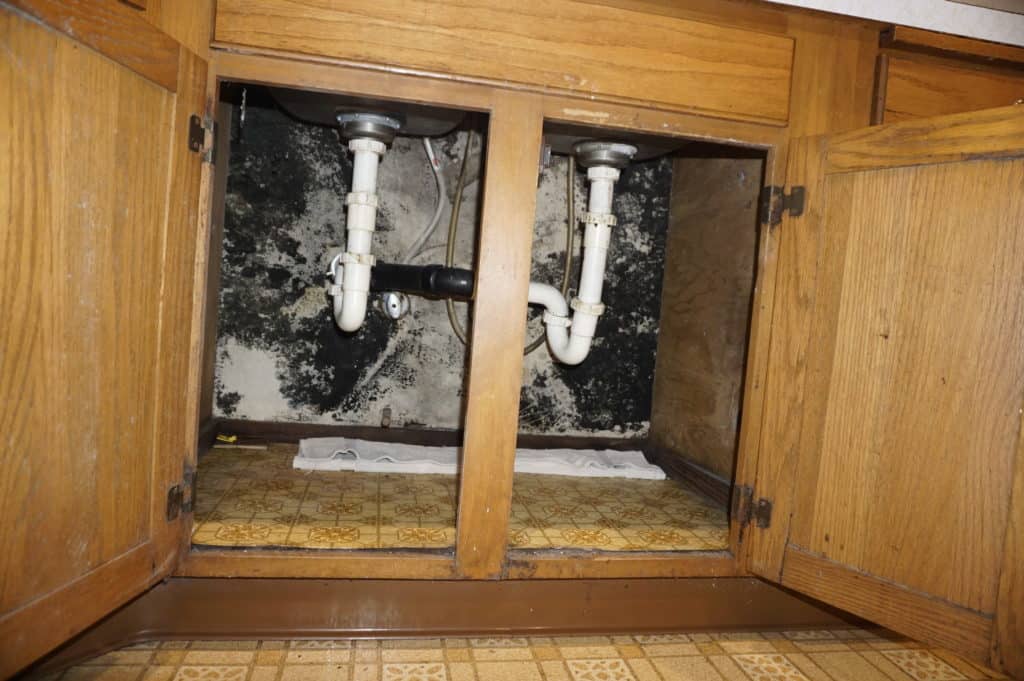In our decades of experience dealing with mold, one of the most common places we have to remove it from is basements. Do you know how to keep that from happening to you? Maybe you’ve already experienced it, and you want to ensure it won’t occur again. Either way, this is the article for you! We’re Cleaner Guys, a professional mold removal company with more than 20 years of experience, and in this article, we’re going to share our expert advice on how to prevent mold in a basement! Read on.
Table of Contents
- What Causes Basement Mold?
- Top 10 Ways How to Prevent Mold in a Basement
- Is It Safe to Live in a House With Mold in the Basement?
- Can You Clean Mold Yourself?
What Causes Basement Mold?
Basement mold is caused by excess moisture, such as leaks, condensation, water damage, or even humidity. Mold is a fungus, an organism distinct from both plants and animals. It grows wherever it can find moisture, oxygen, and a food source it can absorb (including drywall, wood, and textiles). Mold spores are floating around in the air all the time, indoors and outdoors, just like dust particles and bacteria. However, they don’t cause visible mold growth until they find excess moisture, like from a leak or condensation. Then they will land and begin to root and grow.
Now, on to how to prevent mold in a basement.
Top 10 Ways How to Prevent Mold in a Basement
- Checking for excess moisture regularly. That means thoroughly checking for leaks, malfunctioning plumbing, humidity levels, heavy condensation around windows, and signs of water damage and mold inside the drywall.
- Regular cleaning. Mold will have a much smaller chance of growing if you clean the basement thoroughly at least once a month. Be sure to get behind and under all furniture and rugs, and the closets and bathrooms.
- Light. If your basement has windows, don’t block out the light from them with curtains or blinds! Many molds don’t like light. If you’re concerned about privacy, try a translucent privacy film instead.
- Ventilation. If you can’t open the windows regularly, have a fan running in the basement at least every other day. Stagnant air promotes mold spores settling and growing.
- Humidity control. Keeping your basement’s humidity low will greatly help mold prevention. The CDC recommends a humidity level lower than 50%, which you can achieve with a dehumidifier.
- Moving furniture. Mold loves growing behind furniture and textiles that are never moved. Regularly moving your furniture and rugs to check for mold under and behind them is a very hot tip. Every couple of months will do.
- Checking your gutters. Make sure your gutter spouts point away from your house and extend at least a foot, preferably more. Stagnant standing water sitting against your basement walls and windows can cause water intrusion, which will lead to mold.
- Decluttering. We know it’s a big ask, but it’s important. Mold thrives in piles of textiles and boxes of stuff that haven’t been moved in ages. At least regularly air out any seasonal or sentimental items you’re storing in your basement.
- Checking the laundry room. If you have laundry machines in your basement, move them and clean them at least every quarter. Washing machines can leak, which can cause mold underneath them, and dryers full of lint are a great cozy place for mold to nest.
- Checking mold’s favorite hiding spots. At least every couple of months, check the backs of all your sink cupboards, behind your refrigerator, and all the other places mold loves to hide, which we list extensively here.

Is It Safe to Live in a House With Mold in the Basement?
If you can completely shut off the basement from the rest of the house, you might be able to safely stay in your house while the mold is being removed. However, it’s very important that you get the mold removed right away, and that you stay out of the basement until it’s gone. Mold can cause mold sickness, and is not healthy or advisable to be around. Some of the symptoms of mold sickness are mild, but some can be very severe, and everyone reacts to the presence of mold differently. It should therefore be taken very seriously and removed as quickly as possible.
Is a little mold in the basement OK? No, even a little mold can pose a risk to your health or the health of your loved ones. However, you can potentially clean very small areas of mold growth yourself, without calling a professional.
Can You Clean Mold Yourself?
If the area the mold covers is very, very small, yes you can potentially successfully clean it yourself. The EPA’s official recommendation is that you can clean mold yourself if it covers less than 10 square feet. However, in our years of experience actually working with mold, we would recommend that you only try cleaning it yourself if it covers less than 1 square foot. This is because mold usually roots deeply into whatever material it’s on, and in our experience, however much mold you can see, there’s almost certainly a lot more you can’t see.
If your mold covers less than 1 square foot, we recommend soaking and scrubbing it off with a fungicide, which you can find at most hardware stores. The one we use in our work is Fiberlock Shockwave. We are not affiliated with them in any way, we have simply found it to be the most effective.
You can also try cleaning off the mold with vinegar. We only recommend vinegar for very small patches of mold because it doesn’t penetrate very far. But it can be effective on tiny areas. Get more details here.
We do not recommend using bleach on vinegar ever. It’s far too harsh for most surfaces, and is the most toxic and risky of all these methods. Learn more here about why we strongly advise against bleach (despite what the internet says).
What to Do About Mold in a Basement
If you find mold in your basement, and it is has spread across an area larger than 1 square foot, the only way to completely 100% remove it is to hire professional mold remediators. Once mold has spread farther than about 1 square foot, it has almost always spread much further where you can’t see it, inside the wall. Therefore, the only way to be sure to get rid of it is to remove and throw away all mold infested materials. Removing mold infestations requires training and expertise to be done correctly. Most laypeople do not have the knowledge and training required to perform mold remediation effectively.
Furthermore, a couple of species of mold are highly toxic, and can seriously harm you if you tried to remove them yourself. The only way to safely remove mold that may be toxic is with proper training, PPE (Personal Protective Equipment), and equipment, which only professional mold removers have.
This is why it’s important to leave most mold removal to professionals.
If you’re not sure how to go about finding and vetting a good mold removal company, visit our full guide on finding the right mold removal company for you.
If you find yourself in the unfortunate position of needing a professional mold removal company in Western Washington State, consider Cleaner Guys as a high-quality, well-trusted option. We’re proud to boast award-winning customer service, lower prices than others, and top-notch workmanship! Contact us today through the menu at the top of your screen.

Disclaimer: This article is for informational purposes only. No part of this article is medical or legal advice, and may not be used as such. For all serious medical matters, consult your doctor. For all serious legal matters, consult your legal advisor. This article contains Cleaner Guys’ experience and opinions only.


